Different species of grassland fungi produce their fruiting bodies (what we see on the surface) at different times from the summer until the first frosts. This depends on the favourable conditions being present for that particular species. Therefore, usually more than one visit to each site is recommended throughout the season, although there may be different species from year to year, and so monitoring is required each year particularly on an important site.
Grassland Fungi on GWT Nature Reserves
Viv Geen
Why are grassland fungi important?
Grassland fungi are good biological indicators as they are affected by many factors including chemical input (fertilisers and pesticides), air pollution, and habitat change including the growth of tall vegetation (changes in the grazing regime), the invasion of woody species (scrub encroachment), and also climate change (changes to the soil conditions brought about by climatic changes).
Grassland fungi perform an important role as decomposers in their habitat, but they also have other roles which are not fully understood. There is a possible link between mosses and grassland fungi because of their presence in a mossy sward.
Why are they biodiversity indicators of meadows and pasture?
One group of grassland fungi; the waxcap fungi were once common in meadows across the UK. There are about 40 species of waxcap in the UK; being the home of half the world’s population of this species. They are the jewels of the fungi world; found in many forms and colours. They are one of the groups of grassland fungi which do not tolerate the use of chemicals, such as compound fertilisers and pesticides. Their presence is therefore an indication of a high quality unimproved grassland habitat. They also give an indication of the presence of a traditional meadow which has not been ploughed for a long time. Ploughing or any disturbance of the soil beneath the surface, breaks up the soil structure and also the mycellium of the fungus.
How do we determine the quality of a site from its grassland fungi?
This is carried out by counting the number of species within a particular group of fungi. The groups used are clumped together into an acronym and called the CHEGD fungi.
CHEGD = Clavaroids (Clubs, Spindles and Corals), Hygrocybe (Waxcaps), Entolomas (Pinkgills), Geoglossum (Earthtongues), and Dermolomas (Crazed Caps).
Raid’s guide to the importance of a site (as amended by Vesterholt et al (1999) is then used (see previous blog).
What are the ideal conditions for grassland fungi to prosper?
- Low nutrient soil where there has been no application of fertilisers. Small amounts of manure produced by grazing animals provides ideal conditions for some grassland fungi.
- Short sward produced by grazing animals to prevent competition from grasses and a grazing regime to prevent the encroachment of scrub.
- Undisturbed soil over a long time (no ploughing or re-seeding).
- The presence of a good moss flora.
- Well drained site; although not necessarily.
Some of the more common species found on the GWT reserves
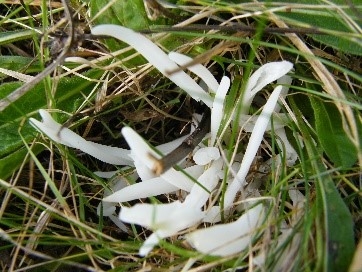
Viv Geen
Clavaria fragilis White Spindles
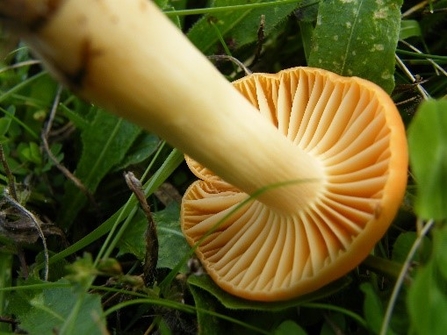
Viv Geen
Cuphophyllus pratense Meadow Waxcap
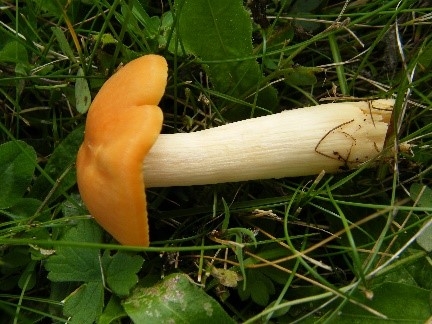
Viv Geen
Cuphophyllus pratense Meadow Waxcap
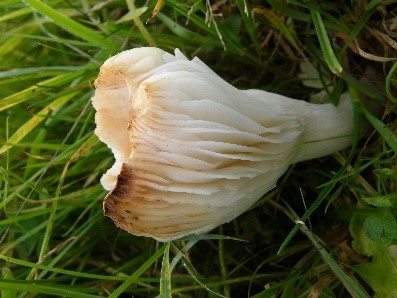
Viv Geen
Cuphophyllus russocoriaceus Cedarwood Waxcap - This has a smell of pencil shavings, or Russian leather!

Viv Geen
Cuphophyllus russocoriaceus Cedarwood Waxcap
Viv Geen
Agaricus moelleri Inky Mushroom
Viv Geen
Agaricus moelleri Inky Mushroom
Viv Geen
Panaeolus papilionaceus Petticoat Mottlegill - This has a frilly edge to the cap and is dependent on dung. One of my favourite mottlegills.
Less common species found on the GWT reserves
- Entoloma madidum Brightsky Pinkgill or Entoloma bloxamii Big Blue Pinkgill (the difference between the two species is determined by spore size). Big Blue Pinkgill is a species of conservation concern in Wales, and listed as an ‘annex species’ on the Red Data List for Britain. Further analysis is required to determine which species is present.
- Cordyceps militaris Scarlet Caterpillar Club - this species is parasitic of insect larvae beneath the surface.
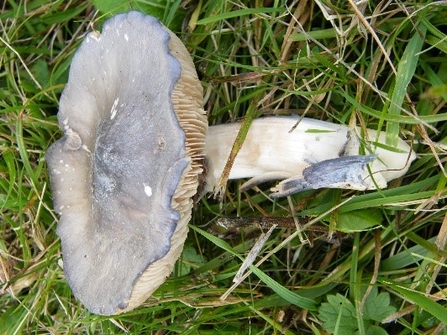
Viv Geen
Entoloma madidum Brightsky Pinkgill or Entoloma bloxamii Big Blue Pinkgill - the difference between the two species is determined by spore size.
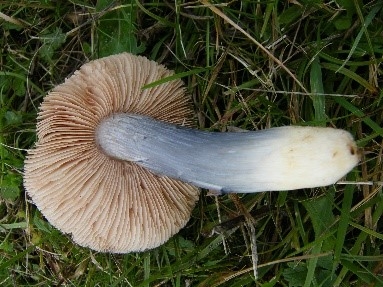
Viv Geen
Entoloma madidum Brightsky Pinkgill or Entoloma bloxamii Big Blue Pinkgill (the difference between the two species is determined by spore size).
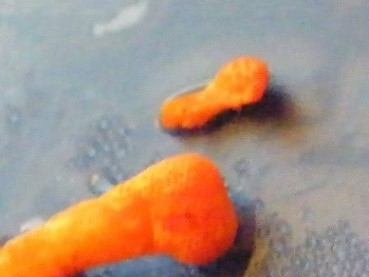
Viv Geen
Cordyceps militaris Scarlet Caterpillar Club
Slime Moulds recorded
These are allocated to the Protista group of organisms and are now not classified as fungi. There are many different species; all very difficult to identify in the field.
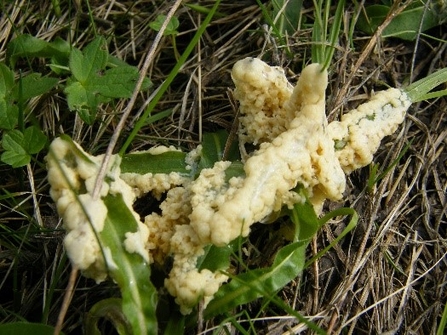
Viv Geen
Fuligo septica Dog Vomit Slime Mould
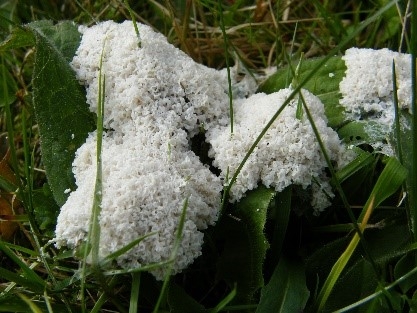
Viv Geen
Fuligo septica Dog Vomit Slime Mould
Contact us
If you know of a site in Gwent supporting grassland fungi such as waxcaps please contact GWT via myself Viv - vgeen@gwentwildlife.org or send a record to your local environmental records centre (Sewbrec).

